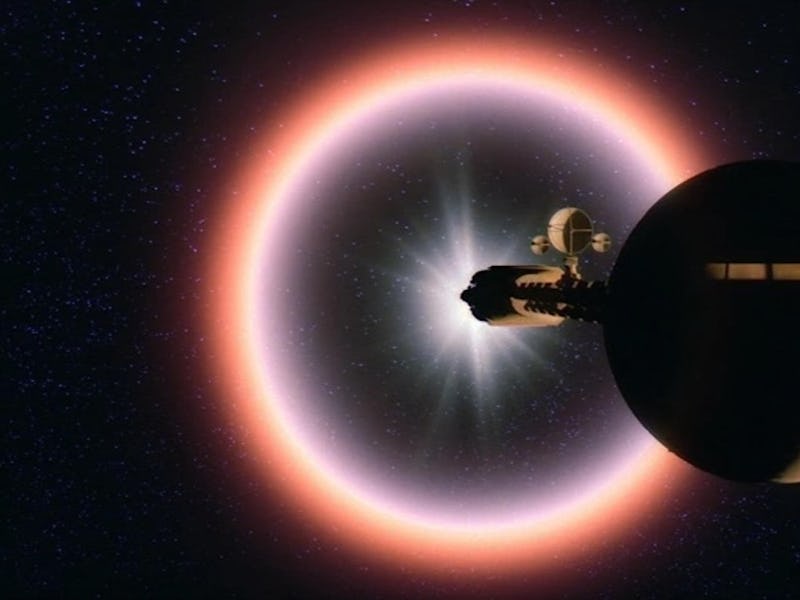2010 Is A Good Sci-Fi Movie, Actually
Better than you remember, if you remember.

1984 was a banner year for sci-fi films. Ghostbusters. The Search for Spock. The Last Starfighter. Buckaroo Banzai. Starman. David Lynch’s Dune. But even though it was financially successful and decently reviewed, one movie is almost always excluded from that list: 2010: The Year We Make Contact. Maybe it’s the lackluster title, or the fact it’s a less-than-artful sequel to one of the greatest and most famous sci-fi films of all time. Whatever the reason, 2010 is a criminally overlooked movie that, were it released today, would likely enjoy significant praise.
Back when legacy sequels weren’t in vogue, 2010 rebooted the universe of 2001 by providing its own unique flavor. Now, 40 years after it first hit theaters, 2010 deserves a rewatch from any serious sci-fi film buff.
Though it was released 15 years after 2001: A Space Odyssey, 2010 is only set nine years after the first film. This is a similar gap between, say, Return of the Jedi (1983) and The Phantom Menace (1999), but what 2010 does well is make it seem like 2001 just happened. Director Peter Hyams presents the story as straightforwardly as possible and treats the events of 2001 not as a problem or baggage, but as a genuine set of questions. Right away, as a mission report recaps 2001’s climax, we’re given the movie’s two mysteries. Why did the AI HAL 9000 malfunction, and what happened to David Bowman (Keir Dullea) after he encountered the monolith?
Wrapped up in these puzzles is the larger question of just what the enigmatic alien monoliths are. Smartly, that mystery is put on the back burner in the first act, which conceals a bigger reveal by the film's end. What 2010 has going for it is the fact that it's both a compelling space mystery and a straightforward sci-fi exploration movie. While 2001 was content to let the audience figure out what everything meant, 2010 goes for brass-tacks realism, making it seem closer to the world of 1979’s Alien than the universe it technically inhabits.
For reasons that are obvious if you’ve seen 2001, 2010’s cast is almost entirely different. Other than Dullea returning as a kind of non-corporeal version of Bowman, we’re dealing with all new faces, starting with Roy Scheider as Heywood Floyd. In 2001, Floyd was a minor character played by William Sylvester, one now trying to take responsibility for losing the USS Discovery nine years prior. Then famous for Jaws, Scheider brings an everyman presence to the film, almost like he’s a second-string captain on loan from a Star Trek movie.
Roy Scheider and John Lithgow in 2010.
That’s not an insult. Scheider’s grounded performance helps make the movie work, and it’s through his dialed-down presence that 2010’s entire ethos can be understood. If 2001 was a movie that made you think about life’s big questions, 2010 is about the regular Joes still scratching their heads a decade later.
Most criticism of 2010 stems from the fact that it’s a sequel to 2001, but 2010 wasn’t even trying to top its predecessor’s originality, artistry, and ruminative tone. It didn’t aim to be a better film than 2001, just tell a more explicable story. Featuring flawless production design, excellent pacing, and great performances from John Lithgow, Helen Mirren, and Bob Balaban, 2010 is still a quality piece of sci-fi cinema, that, somewhat impossibly, should be judged on its own merits.
Today, fans are inundated with reboots and sequels to beloved franchises that are perfectly competent but in no way exceptional. Take this year’s Alien: Romulus and Kingdom of the Planet of the Apes, decent movies praised for dodging pitfalls and simply being a good time at the movies. 2010 should no longer be judged by the criteria of 1984 but by the more complex set of franchise metrics we have now. Now that we know how hard it is to make a good sequel, 2010 should be viewed as a gold standard; not for greatness, but in the fine art of not screwing up.